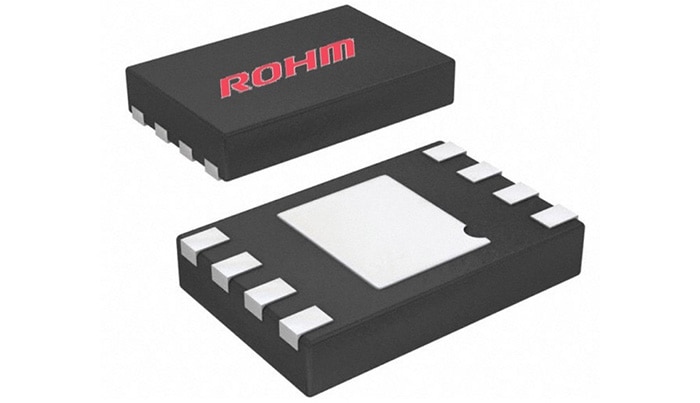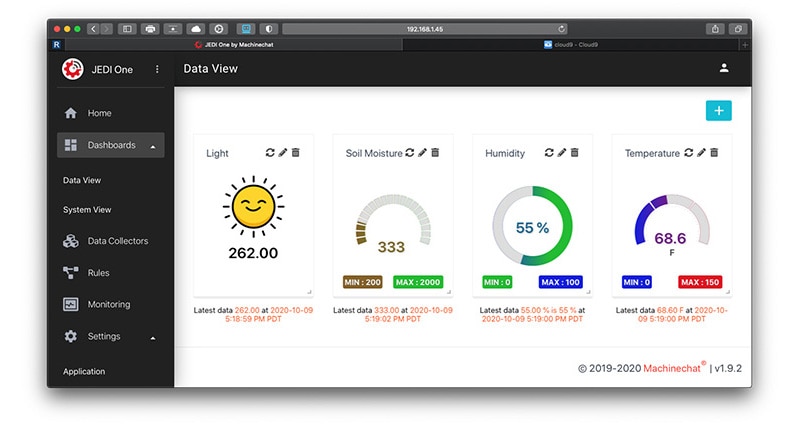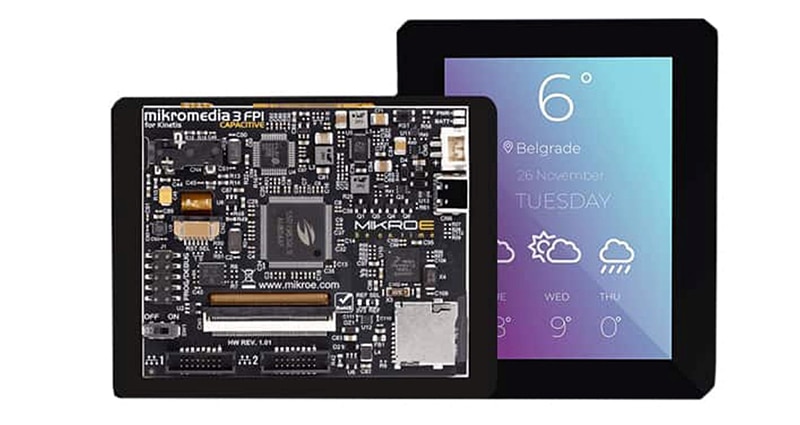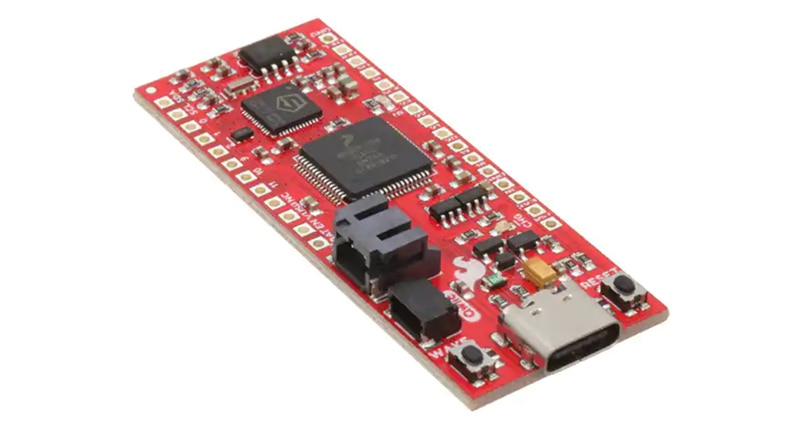Which is the Right Industrial Flashcard for Long-Term Use?
Every engineer has a healthy supply of microSD cards on hand. Mine were scattered across my desk in various convenient locations. When I needed a microSD card for a phone, tablet, or single-board computer (SBC), one would just mysteriously show up, like Batman. My system worked fine until the “Great Desk Vacuum Incident of 2019” when a 16 gigabyte (Gbyte) microSD with an experimental Linux distro suddenly vanished. It was not in the vacuum bag, so I assume it is now in that hidden dimension of space-time where non-replaceable screws and rolls of electrical tape disappear to.
Of course, this led me to put all my microSD cards in one place and of course, being the engineer that I am, I had to classify and categorize my flashcards. While I was initially tempted to organize them by memory size, as I looked at my haphazard collection I decided on a different strategy.
Instead of size, I saw which microSD cards had served me well and which had failed due to data corruption. I started to research the cards and when I looked at flashcard ratings, I found a great deal of misinformation online. My suspicions arose when I saw that the microSD cards I had that fell victim to data corruption were often the fastest and ranked highest online by “impartial” reviewers. So, like any good engineer, I did my own research and discovered that with microSD flashcards, as in life, what is not said is much more important than what is.
Basics of flash memory types
To understand flash memory, we need to look at the semiconductor structure of the memory cell. Single-level cell (SLC) flash is one bit per cell (Figure 1). Multi-level cell (MLC) flash refers to multiple bits per cell, which in reality translates to two bits per cell. I consider this a marketing failure that has consequences I’ll get to later. Triple-level cell (TLC) is three bits per cell and quad-level cell (QLC) flash is four bits per cell.
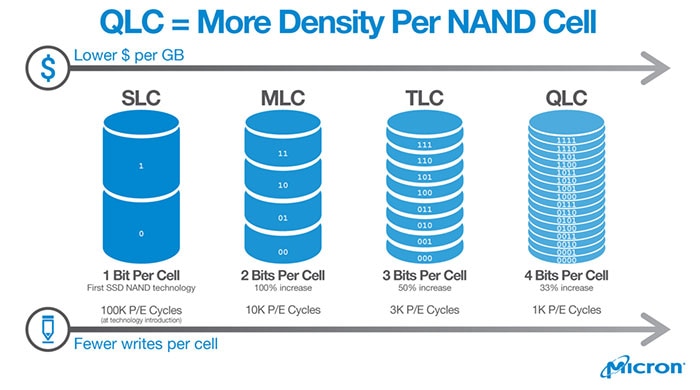 Figure 1: Flash memory types are distinguished by the number of bits per cell, with implications for each as the number of bits increases from SLC through QLC. (Image source: Micron Technology)
Figure 1: Flash memory types are distinguished by the number of bits per cell, with implications for each as the number of bits increases from SLC through QLC. (Image source: Micron Technology)
The more bits a flash array can squeeze into a cell, the smaller the flash array and the less expensive the memory device. However, this size reduction comes at a cost. The smaller the memory bit storage, the fewer program/erase cycles (P/E) the flash cell can endure, making it susceptible to failure. When placing multiple bits per cell and addressing them with a cached flash memory controller, very fast speeds can be achieved, but the memory array also draws more current for reads and writes. This became important as I realized that all the SLC and true MLC microSD cards never gave me any trouble.
I use the term “true” MLC since, technically, this two-bits/cell designation refers to multiple bits. Some less reputable manufacturers of flash memory products—not sold by authorized electronics distributors—like to brand their TLC & QLC products as MLC using the logic, “Hey, it’s multiple bits, isn’t it?”
What is not discussed much about microSD flashcards is their power consumption. Consumer-grade flashcard manufacturers rarely publish their devices’ power consumption. So, when using flashcards for serious work, make sure to check this parameter. It took some detective work, but I discovered that all the microSD cards I had that suffered data corruption were at the high end of the power consumption range, and this included some of the fastest cards.
So, if you are using a flashcard in a single-board computer (SBC), such as a Raspberry Pi 3 Model A+ (Figure 2), you may want to emphasize low power consumption on your list of desirable attributes if the board will be operating unattended in a remote location; regular maintenance checks may not be possible to examine flashcard behavior. The fastest or highest density card may not be the most reliable solution over the long term.
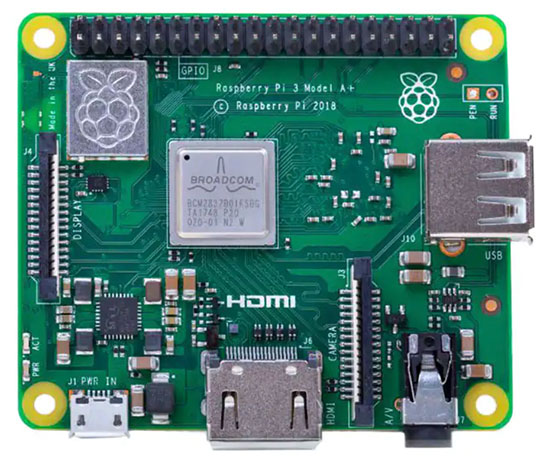 Figure 2: When selecting a microSD card for an SBC like the Raspberry Pi 3 Model A+ you should check for low power consumption as it correlates with higher reliability. (Image source: Raspberry Pi)
Figure 2: When selecting a microSD card for an SBC like the Raspberry Pi 3 Model A+ you should check for low power consumption as it correlates with higher reliability. (Image source: Raspberry Pi)
An example of a reliable flashcard for industrial use is Delkin Devices’ S304TLNJM-U1000-3 4 Gbyte microSD card (Figure 3). This is an SLC flashcard with a wide operating temperature range of -40°C to +85°C, making it appropriate for harsh industrial environments. While it’s common for microSD cards to specify data retention of three or even five years, this 4 Gbyte SLC flashcard is good for 10 years of data retention, very high for a microSD card.
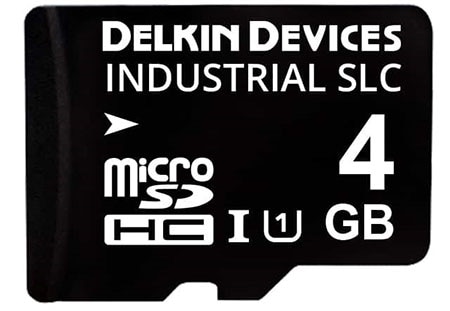 Figure 3: The S304TLNJM-U1000-3 is a 4 Gbyte SLC industrial-grade microSD flashcard with unusually low power consumption and a high data retention rate of 10 years. (Image source: Delkin Devices)
Figure 3: The S304TLNJM-U1000-3 is a 4 Gbyte SLC industrial-grade microSD flashcard with unusually low power consumption and a high data retention rate of 10 years. (Image source: Delkin Devices)
Power consumption for the S304TLNJM-U1000-3 card is unusually low. Read current draw is specified as <50 milliamps (mA) (typical), which is much lower than the read current for most consumer-grade cards. Write current is specified at <100 mA (typical), which is also significantly lower than consumer-grade cards. Write current is important for battery-powered Internet of Things (IoT) nodes that may have to upgrade the flash memory in-system. Idle current is <0.500 mA (typical), which is critical in battery-powered IoT nodes as in some applications a microSD card can spend much more time in idle mode instead of in-use.
All this contributes to a very high endurance rating of 60,000 P/E cycles. It’s difficult to compare these numbers to competing flashcards as many manufacturers do not specify nor release these figures to the public, and when they do, you have to read the conditions carefully. For example, another card’s 50 years of data retention sounds nice until you realize it’s if the card is never written to again over the retention range. Delkin Devices is very specific; it states that its S304TLNJM-U1000-3’s 10-year data retention is if 10% of the specified 60,000 P/E cycles are used.
Conclusion
Clearly, not all microSD cards are the same, so choose carefully, particularly for embedded systems that may have to run unattended for many years, with small likelihood of maintenance checks for memory retention. SLC memory has many advantages for these particular applications.
Specifications remind me of a wise saying from The Worker’s Dilemma which states, “What you don’t do or say, is always more important than what you actually do or say.”

Have questions or comments? Continue the conversation on TechForum, DigiKey's online community and technical resource.
Visit TechForum






